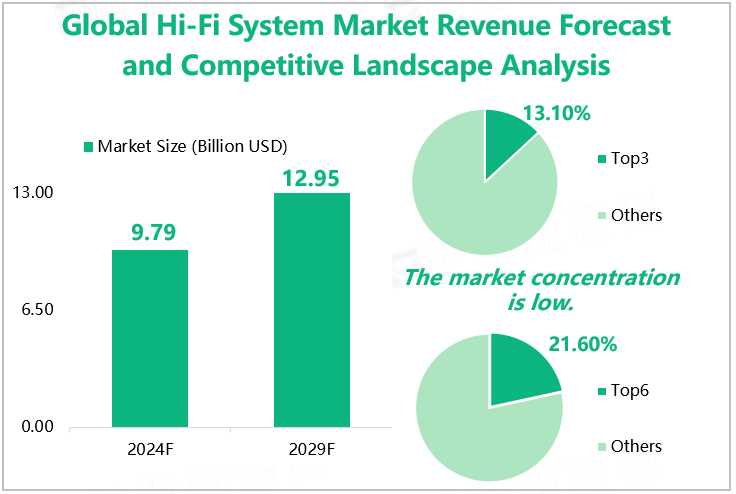High fidelity system, abbreviated as Hi-Fi system,
refers to a combination of devices and systems that can truthfully record and
reproduce the characteristics of the original sound source. This system
requires recording and playback devices to have high performance to ensure the
originality and authenticity of sound signals.
The concept of high fidelity was widely used in the
1950s and 1960s, and relevant standards were formulated by the German Institute
for Standardization in 1973. However,with
the continuous advancement of technology and changes in the market, Hi-Fi
systems are gradually being replaced by high-end audio and imaging equipment.
Introduction to Subdivision Types
|
Classified by signal type
|
-
High-Fi Audio System: focuses on recording and
replaying audio signals (such as music, speech, etc.), pursuing the
originality and authenticity of sound signals.
-
High-Fi Video System: focuses on recording and replaying
video signals (such as movies, TV programs, etc.), pursuing clarity and color
reproduction of image signals.
|
|
Classified by application scenario
|
-
Home Theater System: A Hi-Fi system used in home
environments, including audio and video devices, to provide a high-quality
audio-visual experience.
-
Professional Recording Studio System: A
professional Hi-Fi system used in a recording studio, including audio
recording, mixing, and master tape production equipment, for producing
high-quality music works.
-
Broadcasting and Television System: A Hi-Fi
system used in the field of broadcasting and television, including audio and
video signal acquisition, transmission, and playback equipment, to ensure
high-quality broadcasting of broadcasting and television programs.
|
Source: www.globalmarketmonitor.com
Overview of Market Development
Hi-Fi systems have the advantages of no distortion, precise response, and high restoration, and are widely used in multiple scenarios and fields such as household high-fidelity audio, professional audio equipment, and automotive audio.
In recent years, the global market for Hi-Fi systems has also been steadily growing. According to our research data, the global Hi-Fi system market is estimated to reach $9.79 billion in 2024, an increase of 6.01% compared to 2023. In the future, with the increasing demands of consumers for sound quality and experience, as well as the continuous progress of technology, the market will usher in a broader development space. It is expected that by 2029, the global market size of Hi-Fi systems will increase to $12.95 billion.
Analysis of Market Competition Pattern
From the perspective of market competition, the concentration of the global Hi-Fi system market is low. Data shows that in 2023, the total output value of the Hi-Fi systems of the top 3 enterprises was $969 million, with a total share of only 13.10%; The total output value of the top 6 enterprises' Hi-Fi system was $1598 million, with a total share of 21.60%. The top 3 companies were Sony Corporation, Panasonic Corporation, and Sonos, Inc., with Hi-Fi system output values accounting for 5.86%, 4.02%, and 3.22% of the global market in 2023, respectively.
Global Hi-Fi System Market Revenue Forecast and Competitive Landscape Analysis
Source: www.globalmarketmonitor.com
Market Trend Prediction
Growth trend: It is expected that the global Hi-Fi system market will continue to maintain a growth trend in the coming years. With the increasing demand from consumers for home entertainment experiences and the continuous development of the smart home market, the home high-fidelity audio system market will usher in greater development opportunities. At the same time, the automotive audio system market will also benefit from the rapid development of the automotive industry.
Technological innovation: In the future, the Hi-Fi system market will place greater emphasis on technological innovation. The application of wireless connection, intelligent control, virtual reality, and other technologies will be more widespread, making products more intelligent and convenient. Meanwhile, the technological competition between brands will also become more intense.
